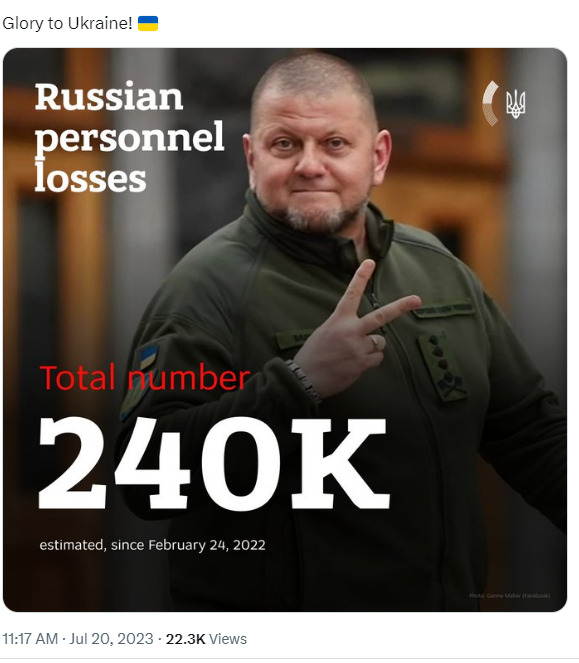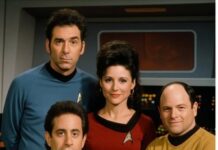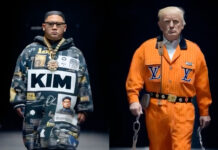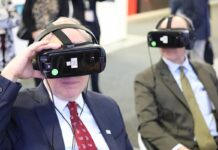The advent of social media has transformed diplomats into ‘visual narrators’. By visual narrators I refer to diplomats’ growing ability to use visuals to deliver complex foreign policy messages. Indeed, over the past few years ,diplomats have learned to speak the language of visuals or what Roland Barthes called “The Rhetoric of the Image”. Barthes argued that visuals are always created with a certain message in mind and that every visual is meant to convey a certain ideology. Visuals are thus loaded with meaning and are employed to promote certain worldview, beliefs, norms, and values. Advertisements, for instance, convey the ideology of consumerism and the belief that most problems can be solved through shopping.
Through images, videos, memes and GIFs, diplomats also deliver a specific message while promoting a certain worldview or view of the world. In other words, diplomats rely on visuals to narrate and explain world events. To do so, diplomats use visual practices including split screens, montages and references to world history or popular culture. In this blog post, I analyze one visual recently published by Ukraine’s Foreign Ministry (MFA). The tweet, shown below, was published on July 20, 2023.
The image depicts a man in battle fatigue. He has a buzz cut hairstyle, a trim beard and is holding up his two fingers. Without any textual information, one might be unable to make sense of this gesture. Yet thanks to the text accompanying the visual, the MFA’s message becomes clearer- the man is referencing the more than 240,000 Russian soldiers that have died in battle “Thanks to the professionalism and bravery of the Armed Forces” of Ukraine. In this way, diplomats use text to anchor the meaning of a visual and to ensure that their message is understood by viewers.
The soldier depicted in this image exudes confidence. His size, stature and facial expression all contribute to an aurora of assurance. In fact, the soldier’s build and broad shoulders, and his dominance in the image, create a sense of near-mythic proportions. This is a towering figure, so large that he obscures the background behind him. Notably, even though Ukraine is fighting a large-scale War, the soldier in the image is calm, clean shaven, and resolute. He is not running from gunfire or dug in a trench. He is not covered in mud or cowering as Russian shells fall on his head. Rather he stands tall and firm. In this way, the soldier personifies the “professionalism and bravery” of Ukraine’s armed forces.
The soldier looks the viewer squarely in the eyes creating a sense of honesty. There is no attempt to conceal anything. This creates a high level of authenticity. This is not an actor hired to play the role of a Ukrainian soldier but an honest depiction of Ukraine’s armed forces. Thus, the image serves an evidentiary purpose- it “proves” that Ukraine’s armed forces are not falling apart. They are not retreating or fleeing the battlefield. On the contrary, Ukraine’s army is poised to continue the War with Russia that has already lasted longer than a year. This image may thus negate certain media narratives claiming that Ukraine’s great counter-offensive has proven ineffective.
Importantly, there are no visible ranks on the man’s shoulders, while the rank on his chest is barely visible. This again suggests that the image captures the essence of all Ukrainian soldiers and not this one, particular soldier. The short hair, battle fatigue and trim beard all create a visual resonance with images seen time and again over the past year- those of President Zelenskyy. Since the beginning of the War, Zelenskyy has traveled the world and greeted world leaders in battle fatigue. He is seldom seen wearing a suit. Zelensky may be using battle fatigue to remind the world that his country is still at War. However, the soldier in the image is much larger and more physically demanding than the President suggesting that this is Zelenskyy 2.0 or the mythical portrayal of the President as “large than life”.
There is also an iconic resonance imbued within in this image. The hand gesture shown by the soldier evokes the image of a defiant Winston Churchill raising two fingers to symbolize “V for Victory”. This is an image, has been seared into the memory of many social media users as it is published time and again and shown frequently on television. Churchill’s “V for Victory” image has become iconic as it has come to symbolize bravery and defiance in the face of great odds. The iconic resonance between the Ukrainian soldiers and Churchill suggests that Ukraine “shale never surrender”- that it shall fight Russia on the beaches, on the landing grounds and in the streets.

The visual association with Churchill enables this image to promote a certain view of the world- that like the UK in WW2, Ukraine too is fighting against tyranny. That like the UK in WW2, Ukraine too is fighting to defend democracy from despotism and that Ukraine’s stand against Russia is not merely a political one but a moral one. Ukraine is fighting for freedom while Russia is fighting for dominion. Through the historical association with Churchill, Ukrainian diplomats help social media users make sense of the War with Russia. History is repeating itself. Once again, the forces of freedom are fighting the forces of tyranny. Yet today it is Kyiv that is enduring the Blitz, not London.
Although the hand gesture can be read as “V for Victory” there is also a similarity with the peace symbol, suggesting that Ukraine is fighting for peace, as opposed to Russia that is fighting for power. The background of the image focuses the viewer’s attention on the soldier, who could be anywhere. He may be walking in Kiev or near Bakhmut. The location is irrelevant, only the soldier’s mindset is relevant.
The soldier is wearing a wedding ring. This symbol may be used to denote the soldier’s devotion to Ukraine; his commitment to see the War to its end or his unwavering loyalty to Ukraine’s freedom. But the ring can also symbolize the cycle of life. This soldier may die today or live to see tomorrow. And whether he dies today or tomorrow, he will be but one link in an unending chain of brave Ukrainians willing to lose their life for their country’s freedom. The image is thus not devoid of context. It does not hide the harsh reality of War, nor does it obfuscate the price of War. Thus, once again the image is “honest”, it speaks truth to power or is a true representation of Ukraine.
This one soldier is the personification of Ukrainian resistance one year into the War with Russia.
The message of this image is thus one of “courage and perseverance”. Ukraine’s courageous fighters will persevere on the battlefield. One year into the War, Ukraine’s soldiers are not shaken, or rattled or defeated. They are poised to march on to victory, to win the War for peace and freedom. Put differently, the message crafted by Ukrainian diplomats one year into the War is- ‘We are not wavering. Shit, we’re not even sweating’.



 Russian soldiers were killed, wounded, captured, or became deserters since the beginning of the full-scale invasion.
Russian soldiers were killed, wounded, captured, or became deserters since the beginning of the full-scale invasion.










